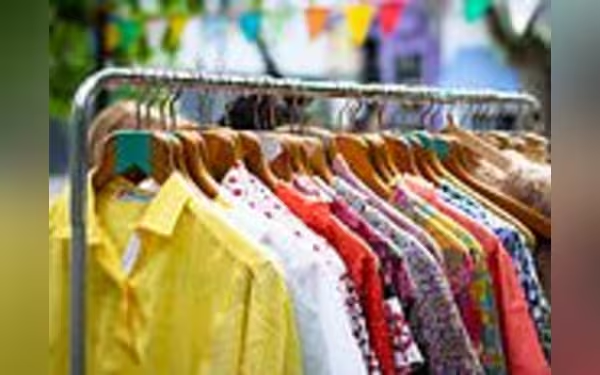Saturday, November 16, 2024 07:46 PM
Health Risks of Second-Hand Clothes in Pakistan
- Second-hand clothes may contain harmful bacteria and viruses.
- Proper disinfection is crucial before wearing pre-owned garments.
- High-temperature washing effectively removes pathogens from clothing.
 Image Credits: dailymailuk
Image Credits: dailymailukA scientist warns that second-hand clothes in Pakistan may harbor harmful germs, urging proper disinfection before use.
In recent years, the popularity of second-hand clothing has surged, with vintage markets becoming hotspots for budget-conscious and environmentally aware shoppers. However, a new warning from a scientist has raised concerns about the hygiene of these pre-owned garments. Dr. Primrose Freestone, a senior lecturer in Clinical Microbiology at the University of Leicester, has highlighted that second-hand clothes can be "swimming in germs," which may pose health risks to unsuspecting buyers.
Dr. Freestone's research indicates that second-hand clothing can harbor a variety of harmful bacteria, fungi, and viruses. These pathogens can lead to various health issues, ranging from athlete's foot to more severe conditions like diarrhea. She explains that while many consumers view second-hand fashion as a cost-effective and eco-friendly option, it is crucial to ensure that these items are properly disinfected before wearing.
One of the primary concerns is that clothing can act as a reservoir for infectious diseases. Our skin naturally carries millions of germs, which can transfer to the clothes we wear. What may be harmless for one person could be harmful to another. Dr. Freestone emphasizes that the unique skin microbiome of the previous owner can leave behind germs that may still linger on the fabric if the clothes were not cleaned before being sold.
Previous studies have shown that second-hand clothes can harbor several infectious pathogens, including Salmonella, E. coli, norovirus, and rotavirus, all of which can cause symptoms like fever, vomiting, and diarrhea. Additionally, fungi that lead to skin infections, such as athlete's foot and ringworm, have also been found on these garments. Alarmingly, a recent survey revealed that second-hand clothes sold at a market in Pakistan contained Bacillus subtilis and Staphylococcus aureus, both of which can cause skin and blood infections.
Dr. Freestone warns that simply storing second-hand clothes at room temperature allows any harmful germs to survive for extended periods. For instance, germs on cotton or mixed-fiber clothing can persist for up to 90 days, while those on polyester fabrics can remain viable for as long as 200 days. To combat this issue, she recommends washing newly purchased second-hand clothes at a high temperature, ideally around 60°C, using detergent. This method not only cleans the fabric but also effectively removes germs and inactivates pathogens.
It is important to note that cold water washes are less effective in eliminating these harmful microorganisms. If a high-temperature wash is not feasible, using a laundry disinfectant can help kill any germs present. Dr. Freestone advises against mixing second-hand clothes with regular laundry during the initial wash to minimize cross-contamination. Instead, soaking the second-hand items in a separate bowl of hand-hot water with antibacterial laundry detergent for two to three hours can help eliminate pathogens before a regular machine wash.
While second-hand shopping can be a sustainable and economical choice, it is essential to prioritize hygiene. By taking the necessary precautions to disinfect these garments, shoppers can enjoy their vintage finds without compromising their health. Remember, a little extra care can go a long way in ensuring that your wardrobe remains both stylish and safe.













